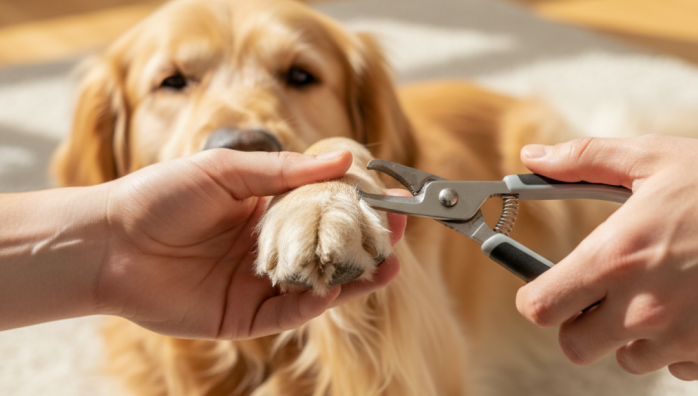Safe Nail Trimming for Your Pet
by admin in Pet Care Basics 27 - Last Update November 21, 2025

I\'ll be honest, for years the thought of trimming my dog’s nails sent a shiver of anxiety down my spine. The fear of cutting too short, hitting the sensitive quick, and causing my best friend pain was very real. I\'d put it off, make excuses, and ultimately rely on expensive groomer visits. But I knew that for my pet\'s long-term comfort and health, I needed to master this essential grooming task myself. It took time, patience, and a few lessons learned the hard way, but I finally developed a calm, confident routine that works for both of us.
Why nail trimming is more than just cosmetic
I used to think of nail trims as purely for looks, to stop my floors and furniture from getting scratched. But I learned from my vet that it\'s a crucial part of their physical wellness. Overly long nails can change the way a pet\'s foot meets the ground. This forces them to rock back on their paws, putting strain on their leg joints and even affecting their posture. In severe cases, the nails can curl around and grow into the paw pad, which is incredibly painful. Seeing it this way completely shifted my perspective; it wasn\'t a chore anymore, it was an act of care.
Choosing the right tool for the job
Walking into a pet store can be overwhelming with all the options. Through trial and error with my own pets, I\'ve found that it really comes down to two main categories: clippers and grinders. Neither is universally \'better\'—it\'s about what you and your pet are most comfortable with.
Guillotine vs. scissor-style clippers
Guillotine-style clippers have a single blade that slices through the nail. I found these worked well on my cat and my smaller dog when he was a puppy. Scissor-style clippers, often called \'Miller\'s Forge\' style, look like small pliers and are what I use now for my larger dog. They feel sturdier and give me more control when cutting through a thicker nail.
The case for nail grinders
A nail grinder is essentially a rotary tool with a sanding band that files the nail down. I was hesitant at first, but it became a game-changer for my dog with dark nails. Because you\'re filing down the nail in tiny layers, it\'s much harder to accidentally hit the quick. The downside is the noise and vibration, which can scare some pets. It requires a bit of patient introduction with lots of treats.
My step-by-step guide to a stress-free trim
This is the process I\'ve honed over the years. Remember, the goal is progress, not perfection. If you only manage one nail in the first session, that\'s a win!
- Set the mood. I never try to trim nails when my dog is hyper or I\'m feeling rushed. We wait for a calm, quiet time when he\'s already relaxed. I get my tools, some high-value treats, and some styptic powder (just in case) ready beforehand.
- Hold the paw gently but firmly. I hold the paw in my non-dominant hand, with my thumb on the pad of the toe and my forefinger on the top of the toe over the nail. This gives me control and helps separate the toes.
- Identify the quick. On my dog’s white nails, it’s easy to see the pinkish quick inside. I trim only the white \'hook\' at the end. For his dark nails, it\'s trickier. I trim off just a tiny sliver at a time. As you get closer to the quick, you\'ll see a small, dark circle appear in the center of the cut nail. That\'s your signal to stop.
- Praise and reward. After every single nail, I give enthusiastic praise and a small, delicious treat. This creates a positive association. We\'re not just trimming nails; we\'re having a special treat time.
- What if you do cut the quick? Take a deep breath. It has happened to me, and it will be okay. I calmly press a pinch of styptic powder onto the nail tip, applying gentle pressure. The bleeding stops very quickly. I give my dog lots of comfort and a jackpot of treats before calmly moving on or ending the session on a positive note. Showing him I\'m not panicked helps him stay calm, too.
Building trust is the most important part of this process. It\'s about patience and celebrating small victories. If you\'re really struggling, I always recommend asking your vet or a trusted groomer for a hands-on demonstration. That\'s how I first built my own confidence, and it can make all the difference.














